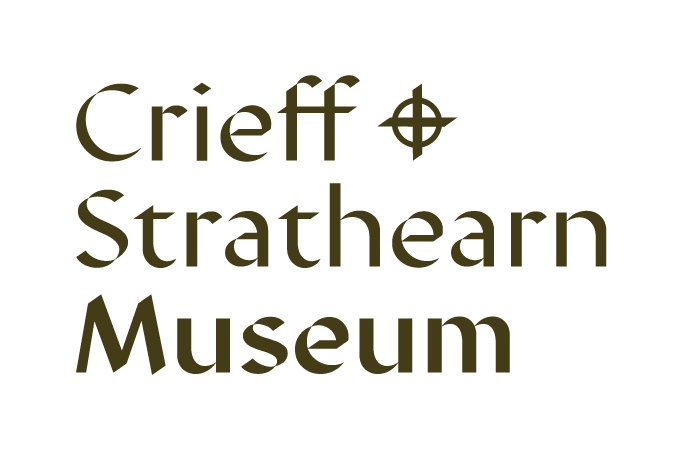A History of Crieff's Water Supply
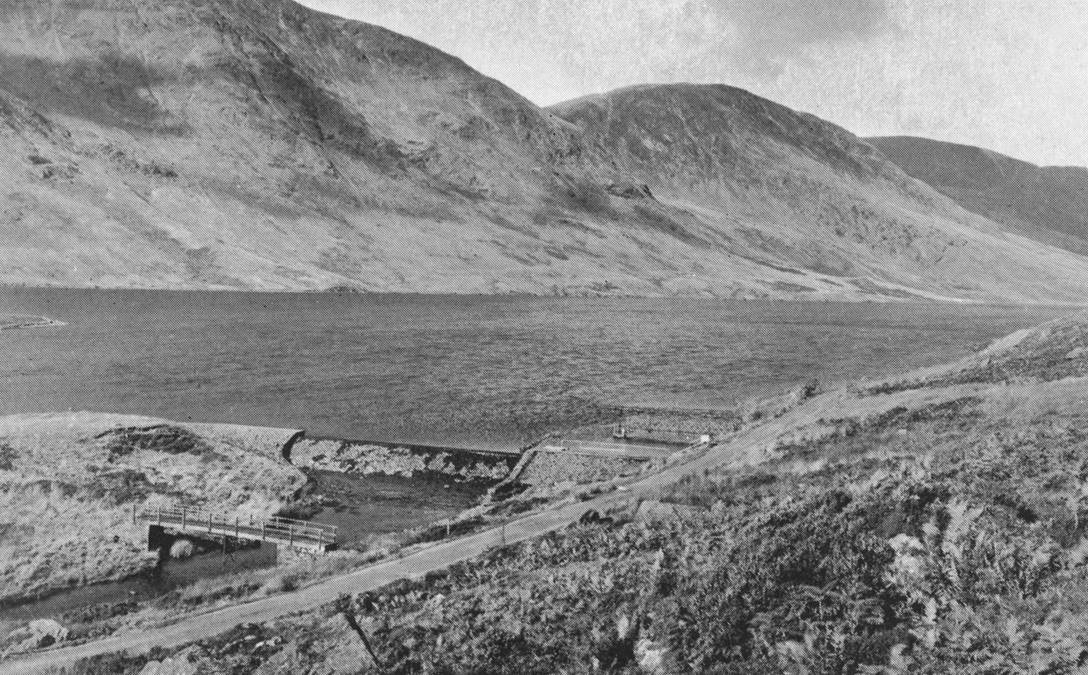
Since this momentous occasion, Crieff has built up a reputation as a healthy tourist resort, with the income made from this to be seen all around in the many fine villas, especially in the northern part of the town, and of course, Crieff Hydro with its motto of ‘Water is Best’!
However, the story really started back at a meeting of the Town Committee on 26th May 1821, when Alexander Porteous tells us in his ‘History of Crieff’, that the question of the water supply arose.
Until this date, the town had been served by numerous springs along the face of the Knock, one or more of which joined to form the Alligan Burn, said to have been one of Crieff’s main water sources.
The Alligan flowed down Mitchell Street and ‘Water Wynd’ (old name for the bottom part of Mitchell Street, crossed the High Street, continued passed the old Parish Church (now Old St.Michael’s Hall) and down into Croftnappock towards the River Earn. Unfortunately the Burn is piped for most of its journey now.
The best known of the springs was the Cold Wells, at the north-west end of the town. Towards the end of the 1700’s, this well was utilised to supply the feuars on the Drummond Estate with water. A stone reservoir was built near the spring, and from it wooden pipes were laid to James Square, where, about 1792 a well was erected, and the local people were able to collect their water.
As the town developed, this system was seen to be inconvenient, and in 1820 steps were taken to have the water made more available for all. A lead pipe was substituted for the wooden one leading from the Cold Wells, a new well was built in James Square (the famous Crieff Square Well), and other smaller wells were established in the High Street, King Street and Comrie Street, these being fed from the Square Well.
In 1830 the water supply was extended from James Square to a well in Burrell Square.
These 2 wells, and the smaller ones, for many years were the only source of the water supply throughout the town. As the town increased in size and population, the want of a constant supply began to be very severely felt at times, especially during the summer, when many of the springs dried up. In September 1859, a great scarcity of water was felt in King Street and Commissioner Street, owing to the employees of the Drummond Arms Hotel washing the Hotel’s carriages with the town’s water.
Crieff adopted the Burgh Act on 23rd March 1864, and at a meeting of the Town Council on 6th June 1864, Dr.Thom moved that an investigation be made into the condition of the reservoirs and wells of the burgh. He spoke of the filthy condition in which the Cold Wells reservoir was, and that all of the 18 wells were requiring thorough repair, especially the one in James Square.
However, for some years, nothing seems to have been done, until the coming of the Hydro in 1868, and several serious fires, gave the movement a fresh impetus.
Eventually Mr.John Buchanan, Civil Engineer, from Edinburgh, was employed to look into the matter, and his report was discussed at the Town Council meeting on 15th November 1869. The following March, Mr.Buchanan was instructed to prepare plans and specifications for introducing the water from Loch Turret, which Sir Patrick Keith Murray of Ochtertyre had offered to the town at a purely nominal sum. After negotiations with Sir Patrick, the agreement was eventually signed on the 29th June 1870.
There was some opposition to the scheme, however, from many of the mill-owners and others on the banks of the Turret, who were concerned that the river would be run dry.
Such was the opposition, with the possibility of riots in the town, that the Town Council resolved on the 18th July 1870 to apply to Parliament for a Provisional Order to allow the work to commence.
On 22nd and 23rd March 1871 an inquiry was held before the Sheriff at Crieff, where an undertaking was come to with the mill-owners and they withdrew all their objections.
In April 1871 a new agreement was entered into with Sir Patrick Murray by which he gave the water for £10 per annum.
A telegram was received on the evening of 24th July 1871 to say that the Provisional Order had received Royal Assent, which now allowed for 36,000 cu ft (around 1 million litres) to be taken daily from Loch Turret.
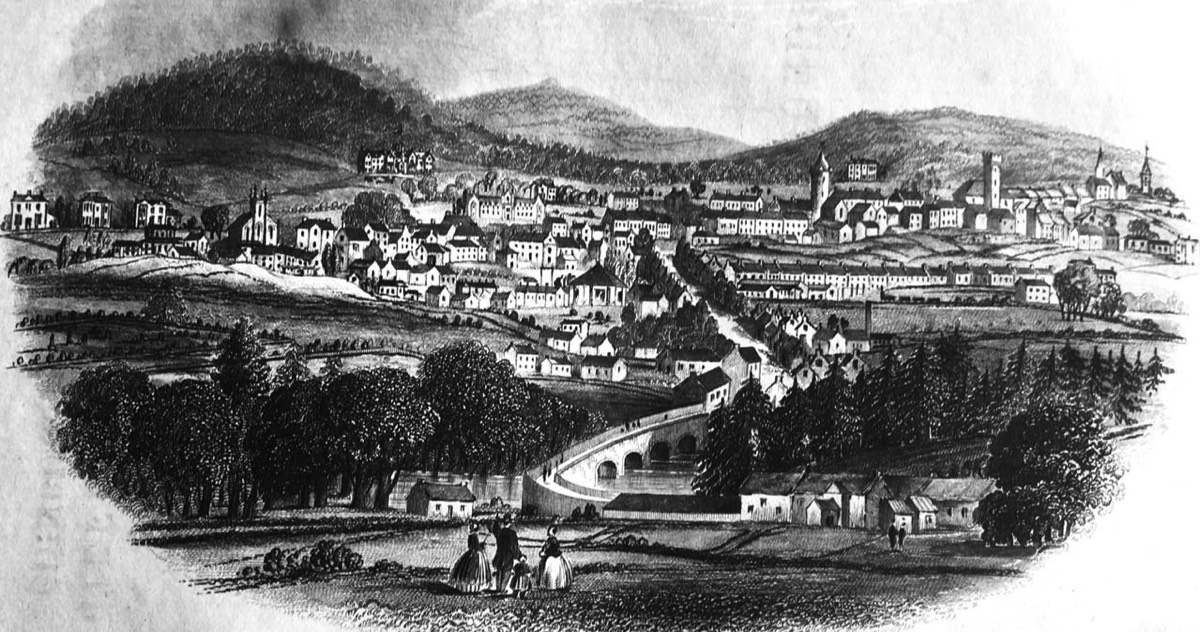
In February 1872, Sir Patrick Keith Murray wrote to the Town Council stating that he gave up for all time coming, his claim to the annual payment of £10. He said he did so, ‘on account of the goodwill he bore to the town and inhabitants of Crieff.’
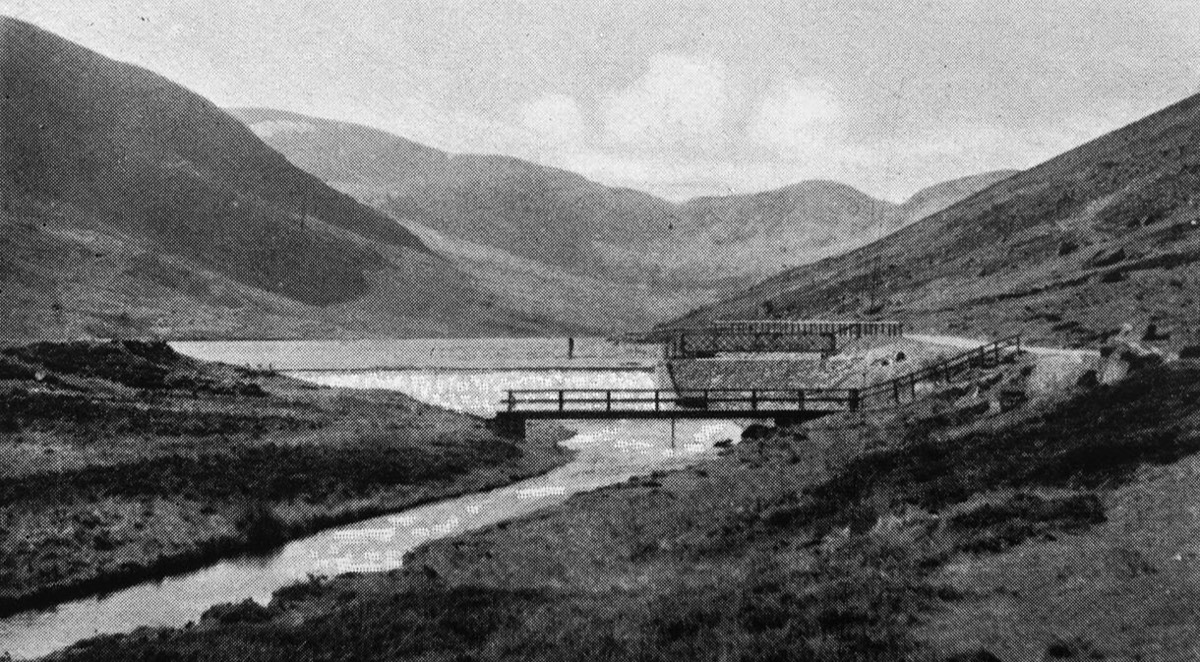
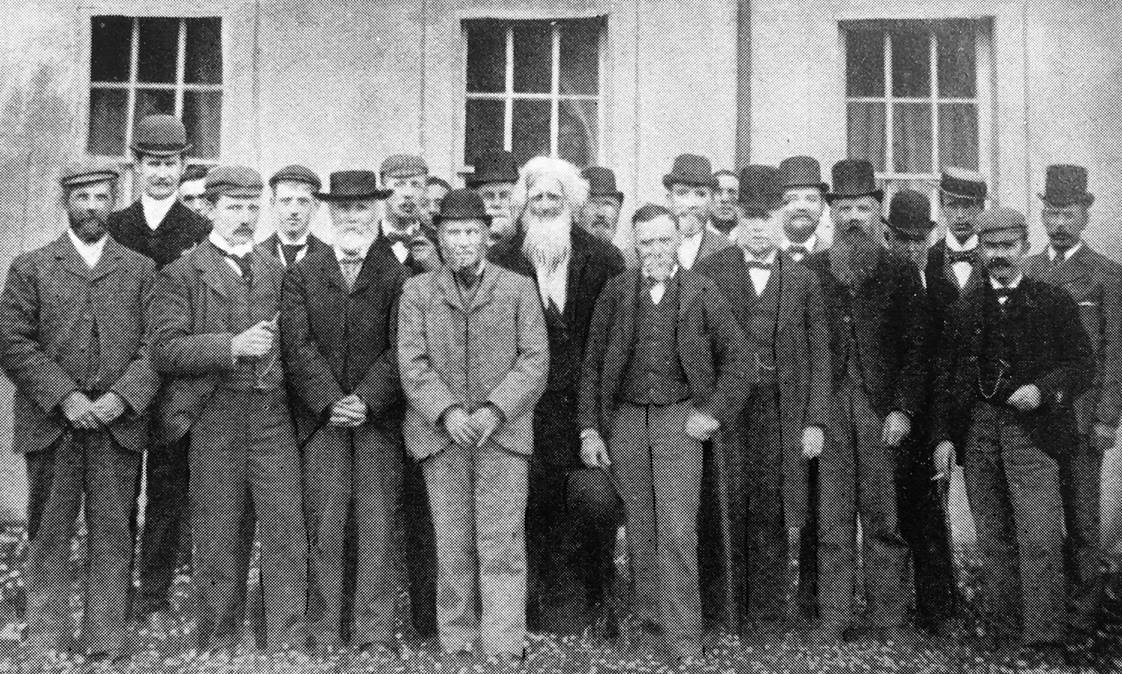
Although a wet and windy day, the Town Council met in the Town Hall on the 29th May at 2pm, and met the various bodies who were to form a procession to celebrate the day, consisting of:
The Volunteer Brass Band
The 8th Perthshire Highland Rifle Volunteers
Drummer and Pipers
The ‘Heather Bell’ Lodge of Good Templars
The ‘Star of Strathearn’ Lodge of Good Templars
Deputation from Comrie St.Kessock’s Lodge of Free Masons
Crieff St.Michael’s Lodge of Free Masons
The Engineer, Contractors of Works, etc.
Magistrates and Town Council
Rev.Dr.Cunningham, Ex-Provost MacRosty
and
The Burgh Fiscal – James McLaren
The procession was escorted by a large number of locals and marched up Hill’s Wynd and Ferntower Road, and straight up the Knock by the road at the west side of the Hydro, till it arrived at the reservoir (now on the Hydro Golf Course). A tent had been erected here, and Lady Murray had already arrived.
Provost Dr.Porteous led Lady Murray to the reservoir, the door of which was opened by the contractor. Dr.Cunningham asked a blessing on the undertaking; and Lady Murray, assisted by Mr.Buchanan, the engineer, turned on the water amid loud cheering from the large crowd. After a short speech by Lady Murray, the Volunteers fired a few shots, and a photograph of the party was taken, while the bell of the Hydro rang merrily and a flag was hoisted.
Cake and wine were served and Lady Murray was presented with a silver vase to mark the occasion.
Having completed the proceedings on the Knock, it was back down to James Square where Lady Murray switched on a fountain which had been specially erected there. It was beautifully decorated with flowers and evergreens, with a tree at each corner, although it would only be a temporary fixture.
It should be noted that Sir Patrick Keith Murray owned no land within Crieff and therefore received no rents nor benefits from granting a free water supply to the town. The main benefactors were of course the townspeople, but also Lord Willoughby d’Eresby of Drummond Castle and Mr.Murray of Dollerie, who both owned land within Crieff and could now sell and feu off more land for housing due to the increased water supply available. However, it seems quite cheeky that in 1878 Lady Willoughby d’Eresby claimed a payment of £40 due to her for wayleave on account of the water pipes passing through her lands!
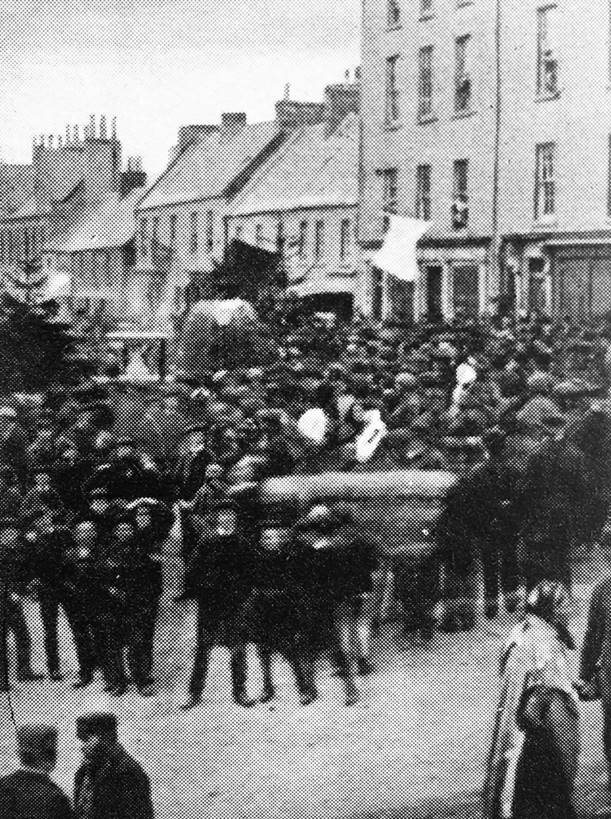
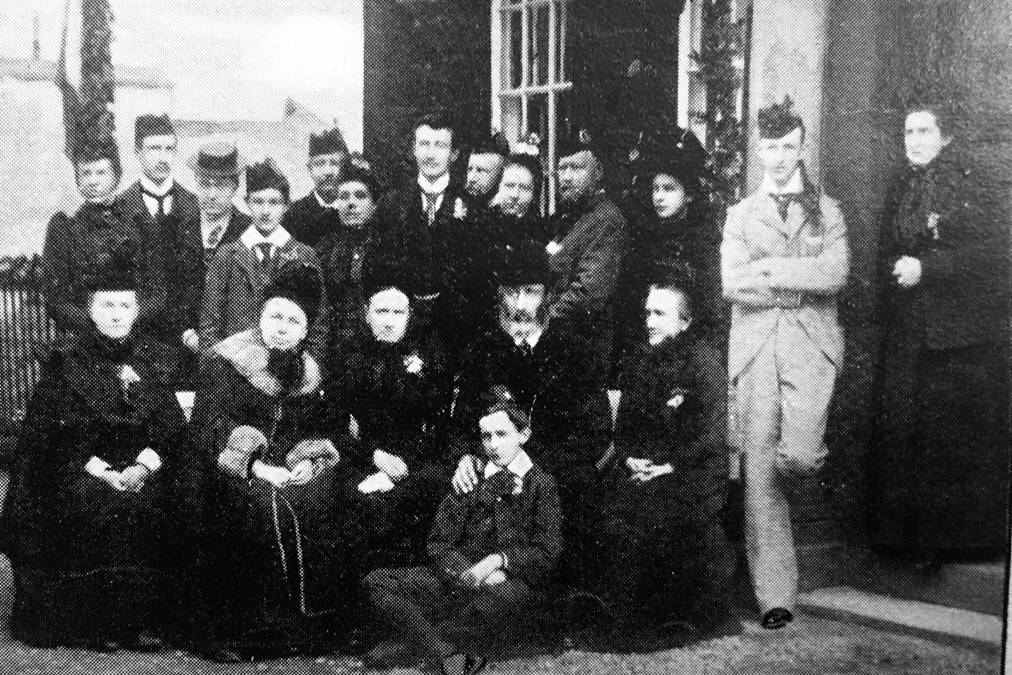
It was decided that a fountain should be erected permanently in James Square. The Town Council decided a competition should be held for a design and the Strathearn Herald of 14th October 1893 mentions that a number of designs had been received and were on show in the Town Hall. Sir Patrick and his family soon chose their favoured design and the Herald of 30th December 1893 gave an illustration of the design by Mr.Mossman, Glasgow (I believe one of his relatives currently works with our local council), would cost around £500 (all paid for by local subscription), and suggested that it should be complete by April or May 1894.
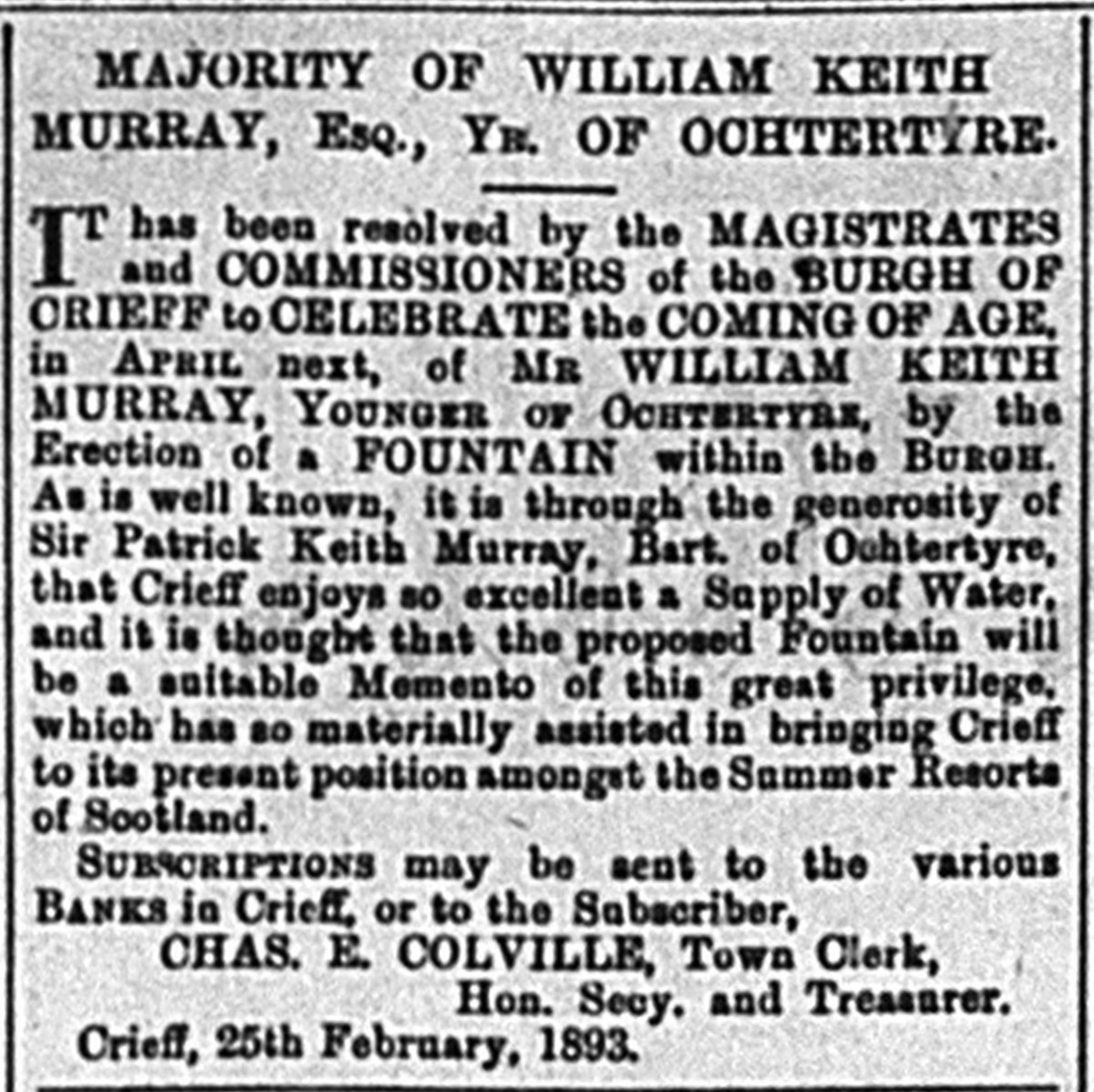
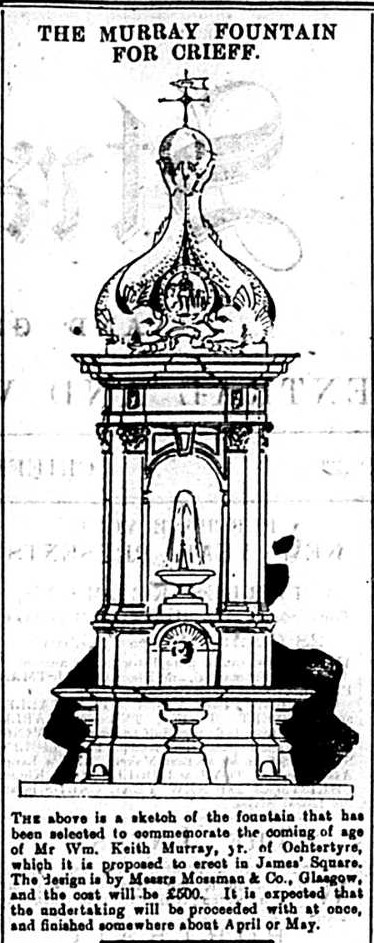
The Herald of 13th October records: "The opening of the Murray Fountain last Saturday – 6th October – is another red-letter day….The ceremony drew together a spontaneous crowd that well nigh filled James Square to witness the interesting function and give renewed expression of their love and affection towards the family in general and Sir Patrick Keith Murray in particular….Part of the day was set apart as a holiday, the shops being closed from 2-6pm, and the towns brass and flute bands discoursed some music…the Magistrates and Commissioners marched from the Town Hall to the Square, as 2 carriages from Ochtertyre drove up to the Fountain, the first containing Sir Patrick Keith Murray, Baronet, and Miss Keith Murray…all of whom on alighting were received with loud cheers…Provost Adie advanced and presented Miss Keith Murray with a lovely bouquet of hot-house flowers and ferns.’ At the end of his short speech, Provost Adie said, ‘I have now the pleasure of presenting Miss Keith Murray of Ochtertyre with a key to turn on the water of the Fountain for the good of the community for all time coming.(Loud and proclaimed cheering.)"
Miss Keith Murray then turned on the water.
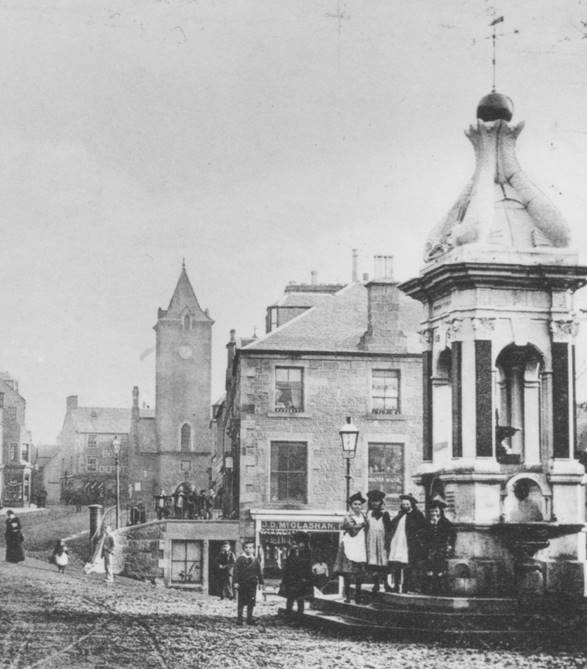
"The key is of gold, specially made for the purpose, and was supplied by Mr.John McOwan, jeweller, West High Street, Crieff. It is beautifully designed, highly ornamented, and is about 5” in length. In the centre of the handle is the Murray shield in coloured enamel, with floral wreath on each side, surmounted with olive branch in green enamel, with the Murray motto, Ex Bello Quies (Rest from war). Behind is the inscription – ‘Presented to Miss Keith Murray of Ochtertyre on the occasion of her opening the Murray Fountain – Crieff, October 1894."
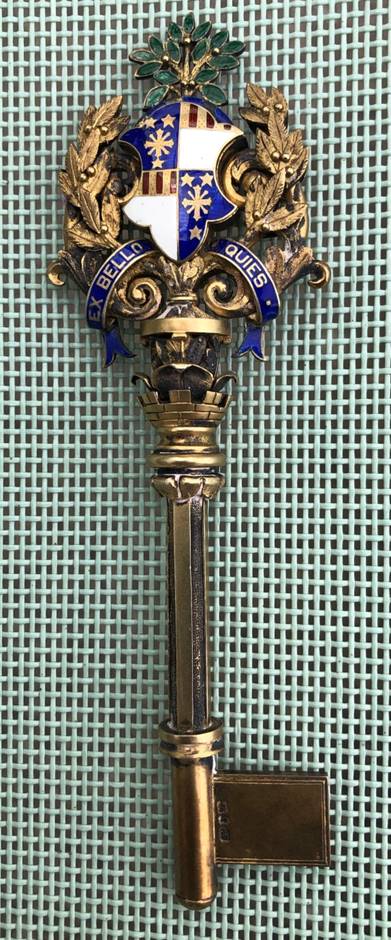
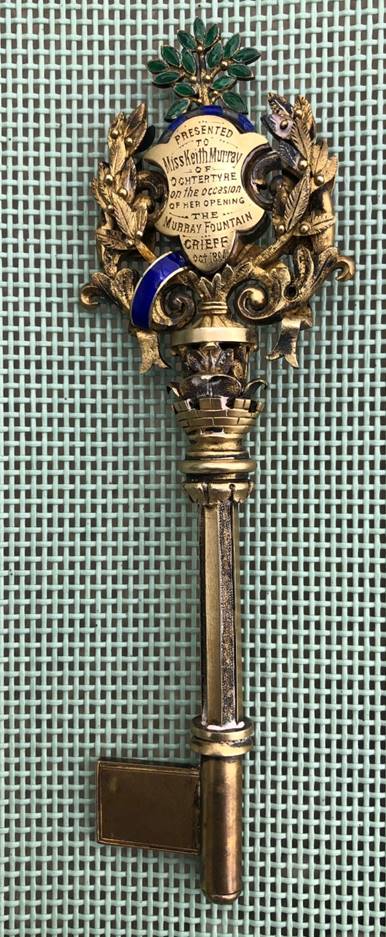
"The Fountain is a very imposing structure, and is a decided ornament to the Square. The whole design has been treated in a very rich manner, after the Ionic order of classic architecture – the dolphins forming a pleasing and appropriate finish. The structure is entirely composed of silver grey granite from Kircudbrightshire, except the basins and pilasters, which are of red polished Peterhead granite. The Fountain bears a representation of the seal of the Burgh of Crieff, and also the crest of the Murrays of Ochtertyre, together with the following inscription on the north side:- ‘Murray Fountain, 1893. Erected by the inhabitants of the Burgh of Crieff. A recognition of many benefits received from the Murrays of Ochtertyre."
What more appropriate way of celebrating 250 years since this amazing gift to the town, than by Perth & Kinross Council cleaning up and switching on the Murray Fountain, so we can all see it as intended, and as a mark of respect to the family lately of Ochtertyre? It really is an icon of Crieff and an ornament to the Square, but it would look so much better if it was working.
David Ferguson – Crieff & Strathearn Museum
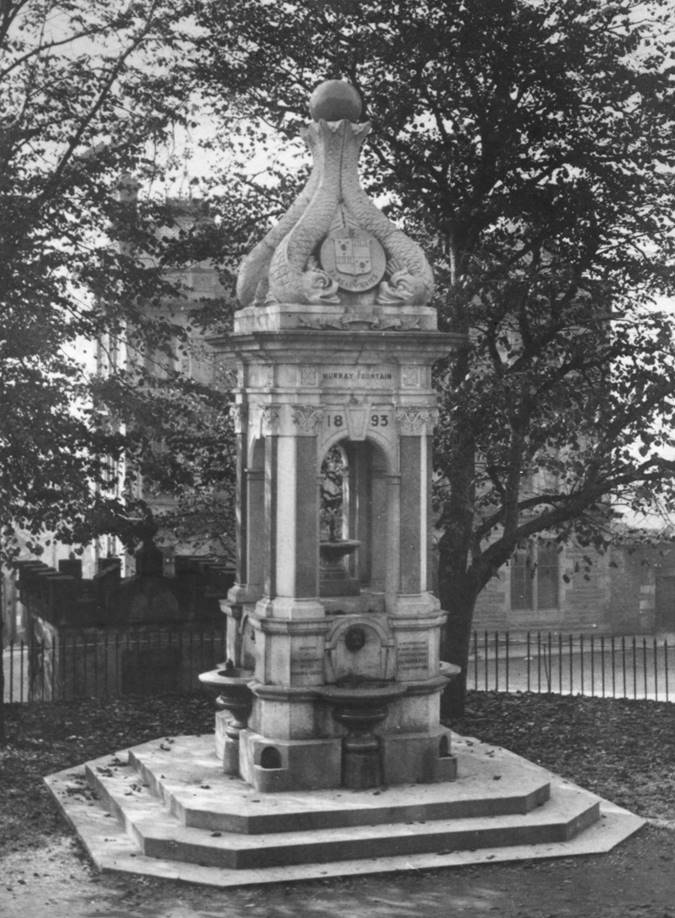
Murray Fountain Davidson's postcard stamped 9th August 1917 Culture Perth & Kinross McArthur Collection
